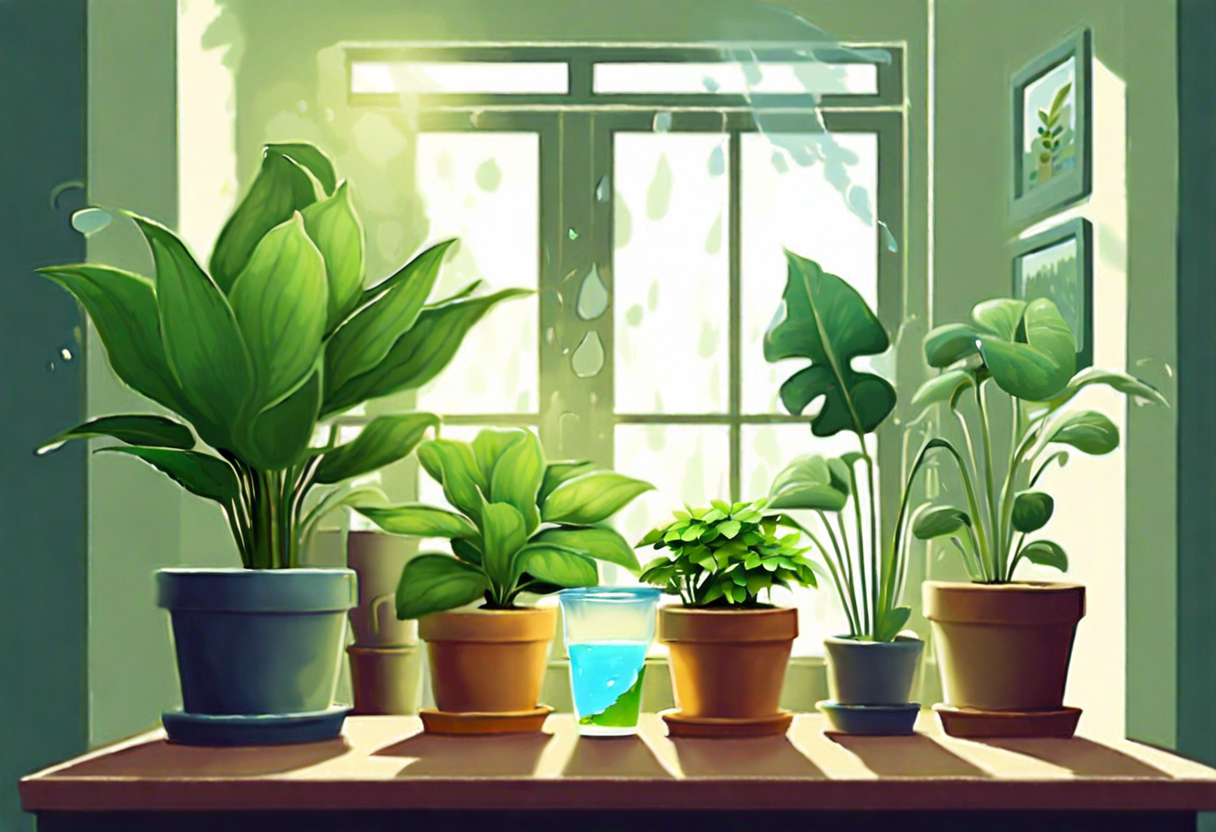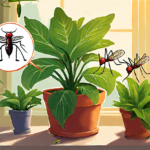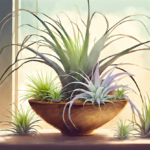Understanding the Watering Needs of Different Indoor Plants
Watering Indoor Plants: A Guide to Understanding Their Needs
When it comes to caring for indoor plants, one of the most important aspects to consider is proper watering. While some plants thrive in moist soil, others prefer drier conditions. Understanding the watering needs of different indoor plants is crucial to their overall health and vitality. In this article, we will explore how often to water indoor plants and provide useful insights into maintaining the perfect moisture balance for your green companions.
Each indoor plant has its own unique water requirements, and it is crucial to assess these needs individually. Factors such as species, size, potting medium, and environmental conditions all play a role in determining the frequency of watering. For instance, succulents and cacti, known for their ability to store water, prefer infrequent watering to prevent root rot. On the other hand, tropical plants with large, lush foliage may require more regular watering.
To determine if your indoor plant needs watering, start by checking the soil’s moisture level. Stick your finger about an inch deep into the soil. If it feels dry, it is an indication that your plant needs watering. However, if the soil feels damp, it is best to hold off on watering as excessive moisture can lead to root rot and other fungal diseases.
Another way to assess the watering needs of your indoor plants is to observe their leaves. Wilting or drooping leaves can be a sign of both underwatering and overwatering. It is essential to strike a balance between the two extremes. Healthy plants will have taut leaves that are neither limp nor wilted.
The time of year and prevailing environmental conditions also influence how often you should water indoor plants. During the spring and summer months, when light and temperature levels are higher, plants tend to have higher water requirements. On the other hand, in the cooler months when growth slows down, watering frequency may decrease.
One common mistake many indoor plant owners make is overwatering. Remember that not all plants require daily watering. Overwatering can lead to root rot and other moisture-related issues. To avoid overwatering, ensure proper drainage for your plant by choosing a pot with drainage holes and using well-draining potting soil.
In addition to regular watering, maintaining appropriate humidity levels can also benefit indoor plants. Some species thrive in higher humidity levels, while others prefer a drier environment. You can increase humidity around your plants by misting them regularly, placing a tray of water nearby, or using a humidifier.
Understanding the watering needs of your indoor plants is vital for their overall health and well-being. By considering factors such as individual plant requirements, soil moisture, leaf condition, and environmental factors, you can determine how often to water your indoor plants. Remember to strike a balance between underwatering and overwatering, and provide adequate humidity when necessary. Following these guidelines will help ensure that your indoor plants thrive and bring beauty to your home or office space.
Signs of Underwatering and Overwatering in Indoor Plants
Introduction
Keeping your indoor plants healthy and thriving requires proper care, including providing them with the right amount of water. However, many plant owners struggle with determining how often to water their indoor plants. One of the key factors in determining the watering frequency is recognizing the signs of underwatering and overwatering. Understanding these signs will help you adjust your watering schedule accordingly and ensure the optimal growth of your indoor plants.
Signs of Underwatering
Underwatering occurs when plants do not receive sufficient moisture to support their growth and development. Some common signs of underwatering include:
-
Dry Soil: One of the most obvious signs of underwatering is dry soil. If you notice that the soil feels dry to the touch or has pulled away from the edges of the pot, it is likely a sign that your plant needs watering.
-
Wilting Leaves: Underwatered plants often display wilting leaves as a response to conserve water. The leaves may appear droopy, limp, or curled, indicating water stress.
-
Yellowing and Browning Leaves: As the plant tries to conserve moisture, it may prioritize survival over growth. This can result in yellowing or browning of the leaves. The lower leaves are usually the first to be affected.
-
Stunted Growth: Insufficient water supply can hinder the plant’s ability to absorb nutrients, leading to stunted growth. If your plant is not flourishing or growing at a slower rate than expected, it may require more frequent watering.
Signs of Overwatering
Overwatering can be just as detrimental to your indoor plants as underwatering. The signs of overwatering include:
-
Waterlogged Soil: Overwatered plants often have soil that is consistently moist or even waterlogged. Excessive water prevents proper oxygenation of the roots, leading to root rot and other related issues.
-
Yellowing Leaves and Root Rot: Overwatering can cause the roots to suffocate and rot, resulting in yellowing leaves. When you gently remove the plant from its pot, check the roots for any signs of decay, such as a foul odor or slimy texture.
-
Wilting Leaves: Although it may seem contradictory, overwatered plants can also exhibit wilting leaves. This occurs because the roots are unable to absorb oxygen and nutrients properly, affecting the overall health of the plant.
-
Mold and Fungal Growth: Excessive moisture creates an ideal environment for mold and fungal growth. If you notice unusual mold or fungi on the soil’s surface, it may indicate overwatering.
Recognizing the signs of underwatering and overwatering is crucial in maintaining the health of your indoor plants. Regularly inspect your plants for dryness or excess moisture, and adjust your watering schedule accordingly. Remember that different plant species have varying water requirements, so it is important to research the specific needs of your indoor plants. By observing the signs and adjusting your watering practices, you can ensure a thriving and lush indoor garden.
Factors Affecting Watering Frequency for Indoor Plants
Watering frequency is a crucial aspect of indoor plant care. Determining how often to water your indoor plants can be challenging, as it depends on several factors. By understanding these factors, you can create a watering routine that best suits the needs of your plants. Here are some key considerations to keep in mind.
-
Plant Type and Size: Different indoor plants have varying water requirements. Succulents, for example, store water in their leaves and stems, requiring less frequent watering compared to tropical plants with thin foliage. The size of the plant also affects watering frequency, as larger plants generally require more water than smaller ones.
-
Potting Mix: The type of potting mix used plays a significant role in determining how often indoor plants need to be watered. Well-draining mixes with ingredients like perlite or vermiculite allow excess water to drain out, reducing the risk of root rot. On the other hand, dense soil mixes tend to retain water, increasing the chances of overwatering.
-
Environmental Conditions: The environment in which your indoor plants are placed greatly influences their watering needs. Factors such as temperature, humidity, and air circulation affect how quickly the soil dries out. Plants placed in warmer and drier rooms may require more frequent watering, while those in cooler and more humid environments may need less frequent watering.
-
Season: The season also affects the watering frequency for indoor plants. During the active growing season, which is typically spring and summer, plants often require more water as they undergo increased photosynthesis and growth. In contrast, plants tend to slow down growth during the colder months, resulting in reduced water requirements.
-
Plant Health: The overall health of your indoor plants can impact their water needs. Healthy plants with well-established root systems are generally more efficient at absorbing water and may require less frequent watering. Conversely, stressed or struggling plants may exhibit signs of water stress, indicating the need for more regular watering.
To determine when and how often to water your indoor plants, it is essential to monitor the moisture levels in the soil. Conduct regular checks by inserting your finger about an inch into the soil. If it feels dry at this depth, it is usually an indication that watering is required. However, if the soil feels moist or damp, it is best to hold off on watering to prevent overwatering.
Remember, it is crucial to strike a balance when it comes to watering indoor plants. Overwatering can lead to root rot and other fungal diseases, while underwatering can cause dehydration and stress. By considering the factors mentioned above and closely observing the needs of your indoor plants, you can develop a watering routine that promotes healthy growth and ensures their well-being.
Best Practices for Watering Indoor Plants: Time, Technique, and Tools
Proper watering is crucial to the health and well-being of your indoor plants. Understanding the best practices for watering can help ensure that your plants thrive and flourish. In this article, we will explore the optimal time to water indoor plants, different watering techniques, and the tools you can use to make the process easier.
Timing is Everything
Determining the right time to water your indoor plants is essential. Generally, it is best to water them in the morning. This allows the plants to absorb the moisture throughout the day and dry out before nightfall. Watering in the evening can create a damp environment that is conducive to fungal and bacterial growth.
Testing the Soil
Before watering your indoor plants, it is important to assess the moisture levels in the soil. Stick your finger about an inch deep into the soil. If it feels dry, it is time to water. If it still feels moist, hold off on watering for a little longer. Overwatering can lead to root rot and other problems, so it is important to strike a balance.
Watering Techniques
When it comes to watering indoor plants, the goal is to water thoroughly but not excessively. Avoid simply sprinkling a small amount of water on the surface as this may not reach the plant’s root system. Instead, water the plant until you see water draining out of the drainage holes at the bottom of the pot. This ensures that the entire root system receives adequate moisture.
Another effective watering technique is the bottom-up method. Place the potted plant in a tray filled with water and allow it to soak up the water through the drainage holes. Once the topsoil appears moist, remove the plant from the tray to prevent waterlogging.
Choosing the Right Tools
Having the right tools can make watering indoor plants easier and more efficient. A watering can with a long spout allows for precise watering without splashing water onto the leaves. This helps prevent fungal diseases and ensures that water reaches the root zone.
In addition to a watering can, a spray bottle can be handy for misting plants that prefer higher humidity, such as ferns or orchids. A moisture meter can also be a useful tool to accurately measure the moisture levels in the soil and determine if your plants need watering.
Following best practices for watering your indoor plants is crucial for their overall health and longevity. By watering your plants at the right time of day, using proper techniques, and utilizing the right tools, you can provide them with the ideal conditions for growth. Remember to test the soil moisture levels, water thoroughly but not excessively, and choose tools that facilitate accurate and efficient watering. With these practices in place, your indoor plants will thrive and bring beauty to your home or office.
Creating a Watering Schedule for Indoor Plants: Recommendations and Tips
When it comes to indoor plants, finding the right watering schedule is crucial for their health and well-being. While each plant has its specific watering needs, establishing a consistent routine will help ensure that your plants thrive. Here are some recommendations and tips for creating a watering schedule for your indoor plants.
-
Understand your plants’ water requirements: Different indoor plants have different water needs. Some plants prefer moist soil, while others need their soil to dry out between waterings. Research the specific watering requirements of each plant in your collection to determine their individual needs.
-
Consider the environment: Factors like temperature, humidity, and air circulation affect how quickly the soil dries out. Plants placed near sunny windows or in rooms with low humidity may need more frequent watering. On the other hand, plants in cool, humid areas may require less water.
-
Check the soil moisture: Before watering your plants, always check the moisture level of the soil. Insert your finger about an inch deep into the soil. If it feels dry at this depth, it’s time to water. If the soil is still slightly damp, wait a few more days before watering again.
-
Adjust for the seasons: Indoor plants’ watering needs can vary depending on the season. During the warmer months, plants tend to dry out faster, so you may need to increase the frequency of watering. In cooler months, when plants are not actively growing, you may need to reduce watering.
-
Use the right watering technique: When watering indoor plants, it’s essential to use the proper technique. Avoid overwatering by pouring water slowly and evenly onto the soil surface until it starts to come out of the drainage holes. This ensures that water reaches the plant’s roots without creating waterlogged conditions.
-
Choose the right containers: The choice of containers can also impact watering frequency. Plants in porous containers, such as terracotta pots, tend to dry out faster than those in plastic or glazed ceramic pots. Consider the material and size of the container when determining the watering schedule.
-
Use a watering calendar or app: Creating a watering schedule can be made easier with the help of a calendar or an app. You can set reminders for each plant, specifying the watering frequency, and receive notifications when it’s time to water. This helps you stay organized and ensures that no plant is overlooked.
Remember, the key to a successful watering schedule is finding a balance. Overwatering can lead to root rot and other issues, while underwatering can cause dehydration and stunted growth. By understanding your plant’s needs, monitoring soil moisture levels, and adjusting for environmental factors, you can create a watering schedule that promotes healthy growth and thriving indoor plants.
Conclusion
Understanding how often to water indoor plants is crucial for their overall health and well-being. The watering needs of different plants vary depending on their species, size, and environmental factors. Signs of both underwatering and overwatering should be closely monitored to ensure that plants receive the appropriate amount of moisture.
Several factors can impact the watering frequency for indoor plants. These include the plant’s growth stage, pot size and material, humidity levels, temperature, and the amount of sunlight it receives. It is important to consider these factors to avoid either under or overwatering your indoor plants.
To ensure the best practices for watering indoor plants, it is essential to use the right time, technique, and tools. Watering in the morning allows the plants to absorb moisture before any excess evaporates. Using a watering can or a hose attachment with a gentle spray nozzle helps to distribute water evenly. The soil should be thoroughly watered until it drains out of the pot’s drainage holes, ensuring the roots are adequately hydrated.
Creating a watering schedule for indoor plants is highly recommended to maintain consistency and prevent over or underwatering. It is important to consider the specific needs of each plant. Factors such as the plant’s tolerance to drought, its size, and the season of the year should be taken into account when establishing a watering routine. During the growing season, when plants are actively growing, they generally require more frequent watering compared to the dormant season.
Tips for creating a watering schedule include observing the soil moisture by sticking your finger into the soil about an inch deep. If it feels dry, it’s time to water. Using a moisture meter can also be helpful in determining the plant’s water needs. Additionally, grouping plants with similar watering requirements can simplify the watering process.
Understanding how often to water indoor plants is a crucial aspect of successful plant care. By understanding the watering needs of different plants, identifying signs of both underwatering and overwatering, considering various factors that affect watering frequency, adopting best practices, and creating a watering schedule, you can ensure the optimal health and growth of your indoor plants. Remember, each plant is unique, so it’s important to observe and adjust your watering practices accordingly. With proper watering techniques and attention to the specific needs of your indoor plants, you can create a green and thriving indoor oasis.


